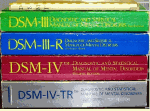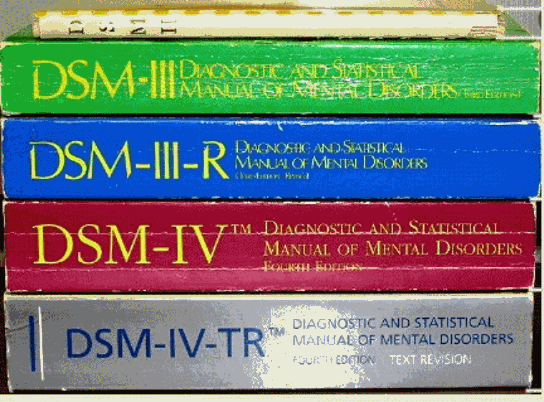

Although the first two editions (in 1952 and 1968) of this classification, drawn up under the patronage of the American Psychiatric Association (APA), were rather confidential, the third edition, published in 1980, quickly established itself, on an international level, as the benchmark classification. For the first time in the history of psychiatry, a manual attempt to collect, methodically, all the diagnoses in use. For each diagnosis, a precise list of criteria is provided: called "monothetic" when their presence is deemed indispensable or "polythetic" when a fixed number of symptoms from a predefined list must be present. Decision trees complement the use of the manual by allowing the differential diagnosis to be refined. The aim is to provide, through the five axes that make up the system (Axis I of mental disorders; Axis II of personality disorders; Axis III of somatic symptom disorders; Axis IV of psychosocial stressors; Axis V which assesses the functioning and level of adaptation of the individual), the most exhaustive clinical picture possible.
The success of this ambitious and innovative classification was unexpected. By the end of the 1980s, the DSM-III had been translated into most languages and was used almost everywhere in the world. Its influence surpassed that of the International Classification of Diseases (at the time, ICD-9) developed by the World Health Organization (WHO). Not only is the DSM-III more clinically accurate than the ICD-9 (which, its designers hoped, would reduce the considerable discrepancies in diagnostic practices - known in technical language as inter-rater unreliability), but it is also more helpful for structuring clinical and pharmacological research, insofar as its operational criteria made it possible to constitute homogeneous cohorts of patients, and thus facilitate the implementation of quantitative analyses.
But the editorial success of the DSM-III was not without criticism and, very early on, reproaches abounded. Many clinicians (particularly those with a psychoanalytical orientation) reproached this classification, which claims to be a-theoretical - in the sense that it was strictly descriptive without venturing into etiopathology - for conveying a reductionist and strictly biomedical conception of mental pathology. Very quickly, other clinicians and researchers joined the chorus of critics, reproaching DSM-III for having sacrificed validity on the altar of inter-rater reliability: in its excessive desire to homogenise clinical practice, DSM-III made the mistake of simplifying the clinical examination in psychiatry, at the risk of distorting the issues at stake. Even psychiatrists very close to the APA, such as Allen Frances (head of the DSM-IV Task Force) and Thomas Insel (director of the NIMH in the early 2000s), ended up regretting the DSM's "lack of validity", which successive revisions over the years (DSM-III-R in 1987, DSM-IV in 1994, DSM-IV-TR in 2000, DSM-V in 2013, and soon DSM-V-TR in 2022) have never made up for.
The hegemonic position of the DSM has produced harmful effects, most of which were unexpected. It has wrongly become a textbook for clinical training in medical schools, and its criteria have been used without hindsight in prevention campaigns. In the United States, the DSM has been misused by lawyers in the courts, behind the backs of psychiatric experts, to clear or accuse someone. The pharmaceutical industry has not been left behind, understanding quite early on the interest (officially health-related, unofficially mercantile) of making public, employing advertising campaigns, clinical criteria normally reserved for professionals, or seeking to influence certain experts to broaden the diagnostic criteria - and therefore drug prescriptions (see the astronomical emoluments that Joseph Biederman, a specialist in Attention Deficit Hyperactivity Disorder in children, hid from the American authorities until the end of the 2000s). Although the DSM is still widely used in the world, its influence has been eroding in recent years. On the one hand, the ICD-11 has finally become the mandatory reference for all WHO member countries; on the other hand, all theoretical attention is now focused on the RDoC (Research Domain Criteria) project, financed by the NIMH, which aims to create an entirely new psychiatric classification, explicitly informed by neuroscience.
Read more in the dictionary : Psychosis of current events- Psychedelic
Lire le texte en français : DSM (Manuel Diagnostique et Statistique des Troubles Mentaux)
Références :
Hannah S. Decker, The making of DSM-III: A diagnostic manual’s conquest of American psychiatry, Oxford University Press, 2013.
Stuart Kirk, Herb Kutchins , 1992, Aimez-vous le DSM ? Le triomphe de la psychiatrie américaine, Les empêcheurs de penser en rond, trad. O. Rallet & D. Gille, 1998.
To quote this paper : Steeves Demazeux, "DSM (Manuel Diagnostique et Statistique des Troubles Mentaux)", in Hervé Guillemain (dir.), DicoPolHis, Le Mans Université, 2023.